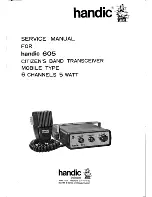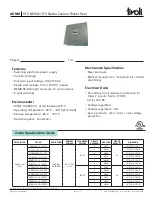
FT146
•
19
coil drastically whenever it is inserted into the coil. You may use a metal
hex key if you are aware of this effect and are willing to remove the hex
key from the coil after each adjustment. Although not recommended, with a
little patience and sandpaper, a useable tool may be formed from a piece of
wood or plastic rod. If you do make your own tool, be very careful to fully
engage the slug because they are very brittle and any wedging or skewed
turning will break it!
❒
3. Small flat blade screwdriver or alignment tool for trimmer capacitors
C12, C43, and modulation pot R13.
❒
4. A suitable 50 ohm dummy load.
❒
5. Proper cable to connect from FT146 transmitter (RCA phono) to
dummy load.
❒
6. A 12 volt DC power source of at least 1 amp.
❒
7. A digital multimeter.
With all the above set-up and handy, let's get testing!
❒
1. Using your hex head tuning tool, back out the coil slugs in L9, L13, L5,
L11 even with the top of their plastic coil form. If a slug binds, gently rock it
back and forth till it loosens up. Be very careful not to crack the slug as
they are brittle. Slowly rotate each slug clockwise into the coil form the
indicated number of turns:
L9: 2 turns
L13: 3 turns
L5: 8 turns
L11: 4 turns
❒
2. Rotate modulation control R13 fully counter-clockwise.
❒
3. Apply 12 volts to the FT146 transmitter board. Its a good idea to fuse
the power to the FT146, 1 to 2 amps will do.
❒
4. Connect a proper 50 ohm dummy load to antenna connector J1. In a
pinch, a light bulb may be used - see the section "Verifying Transmitter RF
Power Output".
❒
5. Plug the microphone into mike jack J2. If you have no microphone, you
may at least "key" the transmitter by jumpering the "PTT" point behind DIN
jack P1 to ground.
❒
6. Hook your multimeter to TP1 and set the meter to the 200 mVDC, (0.2
VDC range).
❒
7. Key the microphone and adjust L9 and L13 for maximum indication on
TP1. No more than a turn or two is needed. You will have to go back and
forth between these coils as they interact. You should get a reading of at
least 50 mV.










































